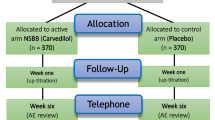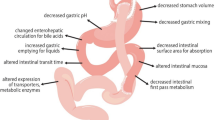Abstract
Upper gastrointestinal (UGI) bleeding occurs frequently and results in substantial patient morbidity, mortality and medical expense. After initial resuscitation to stabilize the patient, carefully performed endoscopy provides an accurate diagnosis and can identify high-risk subgroups in ulcer patients who are likely to rebleed with medical therapy alone and would benefit most from endoscopic haemostasis. Several different pharmacological therapies have been used for patients with bleeding ulcers, including intravenous histamine H2-receptor antagonists, proton pump inhibitors, somatostatin and octreotide, and tranexamic acid. The results of several studies and meta-analyses favour high-dose, intravenous proton pump inhibitors, such as omeprazole or pantoprazole, after successful endoscopic haemostasis.
For patients with ulcer bleeding and low-risk endoscopic stigmata, high-dose oral proton pump inhibitor therapy is suggested. Medical management with proton pump inhibitors is not a substitute for appropriate endoscopic therapy for patients with UGI bleeding and high-risk ulcer stigmata.
Similar content being viewed by others
References
Kovacs TOG, Jensen DM. Recent advances in the endoscopic diagnosis and therapy of upper gastrointestinal, small intestinal, and colonic bleeding. Med Clin N Am 2002; 86: 1319–56
Kovacs TOG. Mallory-Weiss tears, angiodysplasia, watermelon stomach and Dieuafoy’s: a potpourri. Tech Gastrointest Endosc 2005; 7: 139–47
Kovacs TOG, Jensen DM. Endoscopic treatment of peptic ulcer bleeding. Curr Treat Opt Gastroenterol 2007; 10: 143–8
Jensen DM, Kovacs TOG, Jutabha R, et al. Randomized trial of medical or endoscopic therapy to prevent recurrent ulcer hemorrhage in patients with adherent clots. Gastroenterology 2002; 123: 407–13
Jensen DM. Treatment of patients at high risk for recurrent bleeding from a peptic ulcer. Ann Intern Med 2003; 139: 294–5
Green Jr FW, Kaplan MM, Curtis LE, et al. Effects of acid and pepsin on blood coagulation and platelet aggregation: a possible contributor to prolonged gastroduodenal mucosal hemorrhage. Gastroenterology 1978; 74: 38–43
Collins R, Langman M. Treatment with histamine H2-antagonists in acute upper gastrointestinal hemorrhage: implications of randomized trials. N Engl J Med 1985; 313: 660–6
Levine JE, Leonitiadis GI, Sharma VK, et al. Meta-analysis: the efficacy of intravenous H2-receptor antagonists in bleeding peptic ulcer. Aliment Pharmacol Ther 2002; 16: 1137–42
Lanas A, Artal A, Blas JM, et al. Effect of parenteral, omeprazole, and ranitidine on gastric pH and the outcome of bleeding peptic ulcer. J Clin Gastroenterol 1995; 21: 103–6
Labenz J, Peitz U, Leusing C, et al. Efficacy of primed infusions with high dose ranitidine and omeprazole to maintain high intragastric pH in patients with peptic ulcer bleeding: a prospective, randomized, controlled study. Gut 1997; 40: 36–41
Netzer P, Gaia C, Sando Z, et al. Effect of repeated injection and continuous infusion of omeprazole and ranitidine on intragastric pH over 72 hours. Am J Gastroenterol 1999; 94: 351–7
Sachs G, Shin JM, Howden CW. The clinical pharmacology of proton pump inhibitors. Aliment Pharmacol Ther 2006; 23 Suppl. 2: 2–8
Merki HS, Wilder-Smith CH. Do continuous infusions of omeprazole and ranitidine retain their effect after prolonged dosing? Gastroenterology 1994; 106: 60–4
Van Rensburg CJ, Hartmann M, Thorpe A, et al. Intragastric pH during continous infusion with pantoprazole in patients with bleeding peptic ulcer. Am J Gastroenterol 2003; 98: 2635–41
Hasselgren G, Lind T, Lundell L, et al. Continuous intravenous infusion of omeprazole in elderly patients with peptic ulcer bleeding: results of a placebo-controlled multicenter study. Scand J Gastroenterol 1997; 32: 328–33
Lin HJ, Lo WC, Cheng YC, et al. Role of intravenous omeprazole in patients with high-risk peptic ulcer bleeding after successful endoscopic epinephrine injection: a prospective, randomized, comparative trial. Am J Gastroenterol 2006; 101: 500–5
Lau JY, Sung JJ, Lee KK, et al. Effects of intravenous omeprazole on recurrent bleeding after endoscopic treatment of bleeding peptic ulcers. N Engl J Med 2000; 343: 310–6
Sung JJY, Chan FKL, Lau JYW. The effect of endoscopic therapy in patients receiving omeprazole for bleeding ulcers with non-bleeding visible vessels or adherent clots. Ann Intern Med 2003; 139: 237–43
Leontiadis GI, Sharma VK, Howden CW. Systematic review and meta-analysis of proton pump inhibitor therapy in peptic ulcer bleeding. BMJ 2005; 330: 568–70
Andriulli A, Annese V, Caruso N, et al. Proton-pump inhibitors and outcome of endoscopic hemostasis in bleeding peptic ulcers: a series of meta-analyses. Am J Gastroenterol 2005; 100: 207–19
Barkun A, Bardou M, Marshall JK, et al. Nonvariceal Upper GI Bleeding Consensus Conference Group. Consensus recommendations for managing patients with nonvariceal upper gastrointestinal bleeding. Ann Intern Med 2003; 139: 843–57
Bardou M, Toubouti Y, Benhaberou-Brun D, et al. Meta-analysis: proton-pump inhibition in high-risk patients with peptic ulcer bleeding. Aliment Pharmacol Ther 2005; 21: 677–86
Leontiadis GI, Sharma VK, Howden CW. Systematic review and meta-analysis. Enhanced efficacy of proton pump inhibitor therapy for peptic ulcer bleeding in Asia: a post hoc analysis from the Cochrane Collaboration. Aliment Pharmacol Ther 2005; 21: 1055–61
Leontiadis GI, Sharma VK, Howden CW. Proton pump inhibitor treatment for acute peptic ulcer bleeding. Cochrane Database Syst Rev 2006; (1): CD002094
van Herwaarden MA, Samson M, van Nispen CHM, et al. The effect of Helicobacter pylori eradication on intragastric pH during dosing with lansoprazole or ranitidine. Aliment Pharmacol Ther 1999; 13: 731–40
Caraco Y, Lagerstrom PO, Wood AJJ. Ethnic and genetic determinants of omeprazole disposition and effect. Clin Pharmacol Ther 1996; 60: 157–67
Barkun A, Racz I, van Rensburg C, et al. Prevention of peptic ulcer rebleeding using continuous infusion of pantoprazole vs ranitidine: a multicenter, multinational, randomized, double blind, parallel-group comparison [abstract]. Gastroenterology 2004; 126: A–78
Jensen DM, Pace SC, Soffer E, et al. Continuous infusion of pantoprazole versus ranitidine for prevention of ulcer rebleeding: a US multicenter, randomized, double-blind study. Am J Gastroenterol 2006; 101: 1991–9
Hsu PI, Lo GH, Lo CC, et al. Intravenous pantoprazole versus ranitidine for prevention of rebleeding after endoscopic hemostasis of bleeding peptic ulcers. World J Gastroenterol 2004; 10: 3666–9
Jensen DM, Savides T, Sitzer M, et al. Demographics, risk factors, and outcomes of peptic ulcer hemorrhage in the United States: results of a large multicenter study [abstract]. Gastroenterology 2003; 124: A–17
Howden CW, Metz DC, Hunt B, et al. Dose-response evaluation of the antisecretory effect of continuous infusion intravenous lansoprazole regimen over 48 h. Aliment Pharmacol Ther 2006; 23: 975–84
Metz DC, Amer F, Hunt B, et al. Lansoprazole regimen that sustain intragastric ph >6.0: an evaluation of intermittent oral and continuous intravenous infusion dosages. Aliment Pharmacol Ther 2006; 23: 985–95
Andrews CN, Levy A, Fishman M, et al. Intravenous proton pump inhibitors before endoscopy in bleeding peptic ulcers with high-risk stigmata: a multi-center comparative study. Can J Gastroenterol 2005; 19: 667–71
Keyvani L, Murthy S, Leeson S, et al. Pre-endoscopic proton pump inhibitor therapy reduces recurrent adverse gastrointestinal outcomes in patients with acute non-variceal upper gastrointestinal bleeding. Aliment Pharmacol Ther 2006; 24: 1247–55
Lau JY, Leung WK, Wu JCY, et al. Omeprazole before endoscopy in patients with gastrointestinal bleeding. N Engl J Med 2007; 356: 1631–40
Dorward S, Sreedharan A, Leontiadis GI, et al. Proton pump inhibitor treatment initiated prior to endoscopic diagnosis in upper gastrointestinal bleeding. Cochrane Database of Syst Rev 2006; (4): CD005415
Khuroo MS, Yattoo GN, Javid G, et al. A comparison of omeprazole and placebo for bleeding peptic ulcer. N Engl J Med 1997; 336: 1054–8
Bajaj JS, Dua KS, Hanson K, et al. Prospective, randomized trial comparing effect of oral versus intravenous pantoprazole on rebleeding after nonvariceal upper gastrointestinal bleeding: a pilot study. Dig Dis Sci 2007; 52: 2190–4
Murthy S, Keyvani L, Leeson S, et al. Intravenous versus high-dose oral proton pump inhibitor therapy after endoscopic hemostasis of high-risk lesions in patients with acute nonvariceal upper gastrointestinal bleeding. Dig Dis Sci 2007; 52: 1685–90
Yilmaz S, Bayan K, Juzunm Y, et al. A head to head comparison of oral vs intravenous omeprazole for patients with bleeding peptic ulcers with a clean base, flat spots, and adherent clots. World J Gastroenterol 2006; 12: 7837–43
Kim JI, Cheung DY, Cho SL, et al. Oral proton pump inhibitiors are as effective as endoscopic treatment for bleeding peptic ulcer: a prospective, randomized, controlled trial. Dig Dis Sci 2007; 52: 3371–76
Spiegel BMR, Dulai GS, Lim BS, et al. The cost-effectiveness and budget impact of intravenous versus oral proton pump inhibitors in peptic ulcer hemorrhage. Clin Gastroenterol Hepatol 2006; 4: 988–97
Barkun AN, Herba K, Adam U, et al. The cost-effectiveness of high-dose oral proton pump inhibition after endoscopy in the acute treatment of peptic ulcer bleeding. Aliment Pharmacol Ther 2004; 20: 195–202
Sgouros SN, Bergele C, Viozis N, et al. Somatostain and its analogues in peptic ulcer bleeding: facts and pathophysiological aspects. Dig Liver Dis 2006; 38: 143–8
Averinos A, Sgouros S, Viazis N, et al. Somatostatin inhibits gastric acid secretion more effectively than pantoprazole in patients with peptic ulcer bleeding: a prospective, randomized, placebo-controlled trial. Scand J Gastroenterol 2005; 40: 515–22
Tsibouris P, Zintzaras E, Loppos C, et al. High-dose pantoprazole continuous infusion is superior to somatostain after endoscopic hemostasis in patients with peptic ulcer bleeding. Am J Gastroenterol 2007; 102: 1192–9
Imperiale TF, Birgisson S. Somatostatin or octreotide compared with H2 antagonists and placebo in the management of acute nonvariceal upper gastrointestinal hemorrhage: a meta-analysis. Ann Intern Med 1997; 127: 1062–71
Henry DA, O’Connell D. Effects of fibrinolytics inhibitors on mortality from upper gastrointestinal hemorrhage. BMJ 1989; 298: 1142–6
Acknowledgements
No sources of funding were used to assist in the preparation of this article. Dr Jensen has acted as a consultant for AstraZeneca and has received both honoraria and research grant support from AstraZeneca. Dr Kovacs has no conflicts of interest that are directly relevant to the content of this review.
Author information
Authors and Affiliations
Corresponding author
Rights and permissions
About this article
Cite this article
Kovacs, T.O.G., Jensen, D.M. The Short-Term Medical Management of Non-Variceal Upper Gastrointestinal Bleeding. Drugs 68, 2105–2111 (2008). https://doi.org/10.2165/00003495-200868150-00003
Published:
Issue Date:
DOI: https://doi.org/10.2165/00003495-200868150-00003




